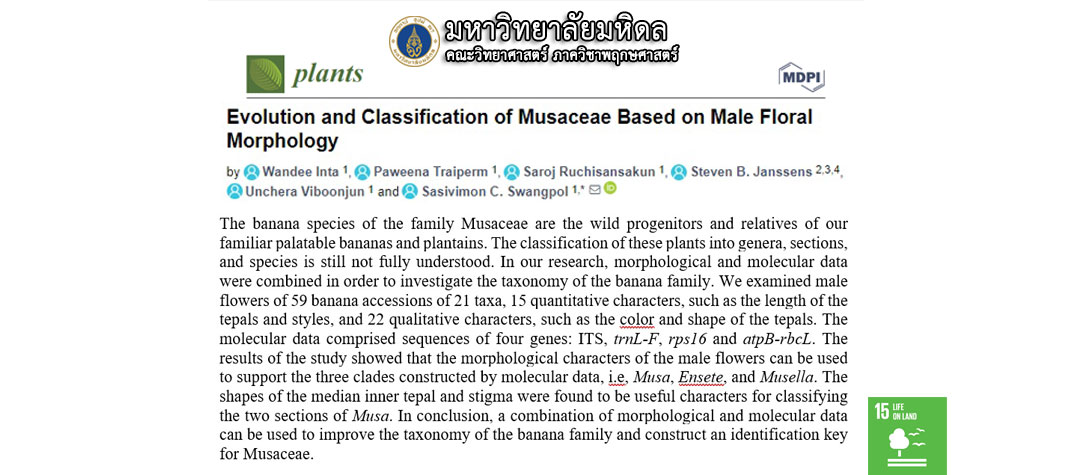Evolution and Classification of Musaceae Based on Male Floral Morphology
Wandee Inta, Paweena Traiperm, Saroj Ruchisansakun, Steven B. Janssens, Unchera Viboonjun and Sasivimon C. Swangpol

The banana species of the family Musaceae are the wild progenitors and relatives of our familiar palatable bananas and plantains. The classification of these plants into genera, sections, and species is still not fully understood. In our research, morphological and molecular data were combined in order to investigate the taxonomy of the banana family. We examined male flowers of 59 banana accessions of 21 taxa, 15 quantitative characters, such as the length of the tepals and styles, and 22 qualitative characters, such as the color and shape of the tepals. The molecular data comprised sequences of four genes: ITS, trnL-F, rps16 and atpB-rbcL. The results of the study showed that the morphological characters of the male flowers can be used to support the three clades constructed by molecular data, i.e, Musa, Ensete, and Musella. The shapes of the median inner tepal and stigma were found to be useful characters for classifying the two sections of Musa. In conclusion, a combination of morphological and molecular data can be used to improve the taxonomy of the banana family and construct an identification key for Musaceae.

